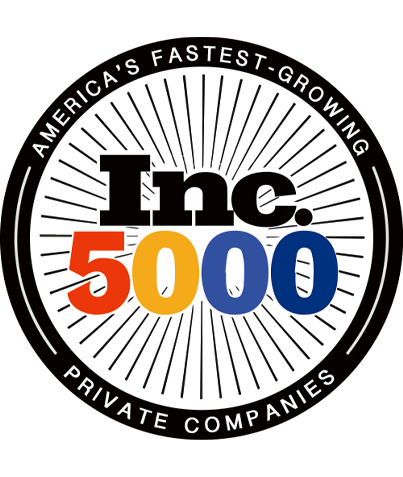Understanding the major differences between WooCommerce vs. WordPress is crucial for making informed decisions. We delve into the key distinctions between these two platforms, highlighting how each caters to different aspects of your online presence. Whether you’re a budding entrepreneur, a small business owner, or a seasoned developer, grasping these differences will equip you with the knowledge to choose the right platform for your specific online needs.
What is WooCommerce?
WooCommerce is a powerful, extendable platform that seamlessly integrates with WordPress to transform any website into a fully functional eCommerce store. Originating as a simple plugin in 2011, it has evolved into one of the most popular eCommerce solutions worldwide, powering over 28% of all online stores.
What sets WooCommerce apart is its open-source nature, offering endless customization opportunities. Users can tailor their online stores with various themes and plugins, adapting to specific business needs and customer preferences. This flexibility, coupled with a robust set of tools for product management, payment processing, and shipping options, makes WooCommerce a versatile choice for both small-scale entrepreneurs and large enterprises.
WooCommerce has democratized online selling, opening doors for anyone with a WordPress website to venture into digital commerce. This platform is not just a plugin; it’s a comprehensive eCommerce ecosystem that balances simplicity with advanced functionality, supported by a strong community of developers and users.
What is WordPress?
WordPress is an immensely popular content management system (CMS), known for its simplicity and flexibility. Launched in 2003, it has evolved from a basic blogging tool into a powerful platform that powers 45.8% of all websites on the internet. Its widespread adoption can be attributed to its user-friendly interface and extensive customization options.
At its core, WordPress’s open-source structure allows users and developers to modify and enhance its capabilities, which means that WordPress can be used to create anything from simple personal blogs to complex corporate websites and even full-fledged online stores with the addition of plugins like WooCommerce. The platform supports thousands of themes and plugins, enabling users to tailor their websites to their specific needs and preferences, regardless of their technical expertise.
What really distinguishes WordPress is its ease of use combined with robust functionality. It offers a rich editing experience, reliable performance, and a high degree of scalability, making it suitable for individual bloggers, small businesses, and large enterprises alike. Furthermore, WordPress has a vibrant community of developers, designers, and enthusiasts who continually contribute to its improvement and expansion.
Major Differences Between WooCommerce and WordPress

We will now break down some of the major differences between WooCommerce and WordPress. Understanding when to use WooCommerce and how it compares to WordPress is crucial.
Ease of Use
A key consideration in comparing WooCommerce and WordPress is the ease of use each platform offers. WordPress, renowned for its intuitive interface, makes website creation and content management accessible for users of all skill levels. Adding WooCommerce introduces eCommerce functionalities, adding additional complexity to the WordPress experience, including aspects like inventory management, product setup, and payment processing, which present a steeper learning curve.
While WordPress simplifies the overall website management process, WooCommerce demands a deeper understanding of eCommerce operations. However, for those already familiar with WordPress, adapting to WooCommerce’s interface and features is a more manageable transition. The key lies in balancing the user-friendly nature of WordPress with the intricate eCommerce capabilities of WooCommerce, making it a powerful yet approachable solution for online selling.
Customization

In the WooCommerce vs. WordPress discussion, customization stands out as a pivotal area where both platforms excel, albeit in different domains. WordPress, as a content management system, provides a vast array of themes and plugins, allowing users to tailor the look and functionality of their websites to a remarkable degree. This customization extends from aesthetic changes, like layouts and colors, to functional modifications, such as adding contact forms or improving SEO.
WooCommerce, on the other hand, builds upon WordPress’s customization capabilities with a focus on eCommerce features. It offers specialized themes designed for online stores, ensuring the shopping experience is cohesive and aligned with the website design.
Additionally, WooCommerce allows for detailed customizations in the eCommerce realm, including various product display options, checkout processes, and customer interaction tools. Users can adapt their online stores, from payment methods to shipping strategies, to meet specific business requirements.
SEO
When it comes to SEO, the distinction between WooCommerce vs. WordPress becomes quite evident. WordPress is inherently SEO-friendly, providing a solid foundation for good SEO practices. It offers clean code, responsive design, and easy content management, all of which are crucial for ranking well on search engines. Additionally, WordPress supports a plethora of SEO plugins, like Yoast SEO, which help optimize content, generate sitemaps, and manage meta tags, further boosting a site’s search engine performance.
WooCommerce, being a WordPress plugin, inherits these SEO benefits. It adds eCommerce-specific SEO enhancements, allowing for the optimization of product pages and categories, including the ability to add meta descriptions and titles for each product, optimize product images, and manage product-specific URLs, all of which are important for ranking in search engine results, particularly in Google Shopping and similar eCommerce focused search environments.
However, the key to maximizing SEO in WooCommerce is understanding and effectively leveraging these additional eCommerce features, which might involve using structured data to mark up products for better visibility in search results, optimizing load times for better user experience, and ensuring mobile responsiveness for shopping on various devices.
Design
In the WooCommerce vs. WordPress debate, design plays a crucial role in how each platform supports the creation of visually appealing and functional websites. WordPress is renowned for its wide range of design possibilities. It offers thousands of themes, both free and premium that cater to various styles and industries. These customizable themes allow users to adjust layouts, color schemes, and typography to fit their brand identity. WordPress also supports numerous plugins that enhance design elements like sliders, galleries, and animations, making creating a unique and engaging user experience possible.
WooCommerce complements this by providing specialized design options for eCommerce. While it doesn’t change the overall design capabilities of WordPress, it adds features crucial for online stores, such as product display layouts, shopping carts, and checkout processes. WooCommerce-compatible themes are designed to integrate these eCommerce elements seamlessly with the rest of the website, ensuring a cohesive and intuitive shopping experience. These themes often emphasize product showcases, easy navigation, and clear call-to-action buttons, which are essential for driving sales.
Moreover, WooCommerce allows for detailed customization of store elements. Users can modify how product pages look, how items are categorized, and how checkout pages function, ensuring that the eCommerce aspects align well with the overall website design.
Scalability
In discussing the scalability of WooCommerce vs. WordPress, it’s important to recognize how each platform caters to growth and expansion. WordPress, as a content management system, excels in scalability. It is adept at handling sites ranging from small personal blogs to large corporate websites with significant traffic. This scalability is largely due to its flexible architecture and the vast ecosystem of plugins and themes. WordPress sites can be scaled up with various optimization tools and advanced caching mechanisms by leveraging content delivery networks (CDNs). Moreover, WordPress can accommodate increased content, more users, and higher traffic volumes as a site grows, making it a reliable platform for long-term growth.
WooCommerce inherits the scalability of WordPress but introduces additional considerations due to its eCommerce functionalities. It effectively handles small to medium-sized online stores out of the box. However, as an eCommerce site grows in terms of product numbers, customer traffic, and transaction volume, WooCommerce may require more sophisticated hosting solutions, such as dedicated or managed hosting services. Additionally, scalability in WooCommerce might involve:
- Optimizing product databases.
- Managing larger inventories efficiently.
- Ensuring that the checkout process remains fast and efficient for higher volumes of orders.
To scale up a WooCommerce site, implementing performance optimization strategies specific to eCommerce, such as streamlined order processing, efficient tax calculations, and optimized product search and filtering, might be necessary. Also, integrating with external services for inventory management, fulfillment, and advanced analytics becomes crucial as the store grows.
Security
When considering the security aspects of WooCommerce vs. WordPress, it’s essential to understand how each platform addresses the challenges of online safety. WordPress, as a platform, is developed with security in mind, but its popularity makes it a common target for cyber threats. The core software is regularly updated to address security vulnerabilities, and site owners are encouraged to apply these updates promptly. Additionally, WordPress supports a range of security plugins that provide enhanced protection features like firewalls, malware scanning, and brute force attack prevention. However, the security of a WordPress site also heavily depends on user practices, such as using strong passwords, implementing two-factor authentication, and ensuring that themes and plugins are from reputable sources and kept up-to-date.
WooCommerce, as a WordPress plugin, inherits the base security features of WordPress but faces additional security challenges specific to eCommerce. These include safeguarding customer data, processing secure transactions, and protecting against eCommerce-specific threats like fraudulent transactions and data breaches. WooCommerce sites require SSL certificates to encrypt data transfers, particularly for payment processing. Choosing secure payment gateways and maintaining PCI compliance for handling credit card information is also crucial.
Community and Support
WordPress boasts a vast and active community, one of its greatest strengths. This community comprises millions of users, developers, and enthusiasts worldwide. The WordPress.org forums are a hub for user-generated support, where one can find answers to almost any question or issue related to WordPress. Beyond the forums, numerous blogs, online tutorials, webinars, and YouTube channels are dedicated to WordPress education. Additionally, WordPress meetups and WordCamps (official WordPress conferences) occur globally, offering opportunities for learning and networking. This extensive community support is invaluable, especially for new users and when troubleshooting complex issues.
WooCommerce benefits from being part of the WordPress community and has developed its own dedicated support system and community focused on eCommerce. Numerous WooCommerce-specific resources, including forums, blogs, and tutorials, are tailored to help users with eCommerce challenges. WooCommerce also has official support provided by Automattic, the company behind WordPress.com, offering professional assistance for more technical or specific queries. The WooCommerce community actively shares eCommerce strategies, plugins, and themes, contributing to a rich ecosystem of resources.
E-commerce Capabilities

Understanding the distinction between WooCommerce vs. WordPress is vital for anyone venturing into the online retail space. WordPress, in its standard form, isn’t equipped with eCommerce functionalities. It’s primarily a content management system designed to create and manage websites focusing on content like blogs, portfolios, or corporate sites. However, its true potential in eCommerce is unlocked with the integration of WooCommerce.
WooCommerce transforms a WordPress site into a full-fledged eCommerce platform. It adds a comprehensive suite of eCommerce features unavailable in WordPress by default. These features include:
- Product Management: WooCommerce allows the creation and customization of an extensive range of products, including physical items, digital downloads, and even affiliate goods. It provides options for managing product variations, stock levels, and advanced product attributes.
- Payment Processing: It integrates with a variety of payment gateways, including PayPal, Stripe, credit cards, and more, offering secure and diverse payment options for customers worldwide.
- Shipping and Tax Configurations: WooCommerce provides advanced shipping settings, including the ability to set flat rates, free shipping, or real-time calculations. It also handles complex tax calculations and offers geo-location features for accurate tax assessment.
- Customer Management and Order Processing: The platform includes tools for managing customer accounts, order tracking, and automated email notifications, ensuring a smooth transaction process from start to finish.
- Analytics and Reporting: WooCommerce offers built-in analytics tools that provide crucial insights into sales performance, customer statistics, and inventory levels for informed business decision-making business.
- Extensions and Plugins: A wide array of WooCommerce-specific extensions and plugins are available, enhancing the eCommerce functionality further. These can add features like bookings, memberships, subscriptions, and dynamic pricing, among others.
While WordPress provides the foundation for website creation and content management, WooCommerce adds the necessary eCommerce functionalities, making it a robust solution for online selling. This synergy allows users to manage both their website and online store through a single, integrated platform.
Reach Out to the Experts
Now that you understand WooCommerce vs. WordPress, it’s clear that both platforms have distinct strengths and purposes. WordPress excels in creating diverse types of websites with its powerful content management capabilities, while WooCommerce unlocks the full potential of eCommerce within the WordPress environment.
At Oyova, we specialize in bridging the gap between these two powerful platforms, offering tailored eCommerce development services. Our expertise lies in harnessing the unique features of both WordPress and WooCommerce to create seamless, efficient, and engaging online experiences. Whether you’re looking to launch a new eCommerce store or optimize an existing one, our team is equipped to bring your vision to life, ensuring your online presence is both impactful and aligned with your business goals.
Choose Oyova for your eCommerce development needs and leverage our expertise in WooCommerce vs. WordPress to build a dynamic, robust, and successful online store. We offer Shopify development services as well. Contact us today to get started!
FAQs on WordPress vs. WooCommerce
We will now break down some frequently asked questions as they relate to WordPress vs. WooCommerce.
No, both WordPress and WooCommerce are designed to be user-friendly, with many options that don’t require coding knowledge. However, coding can be beneficial for more advanced customizations.
WordPress is a comprehensive content management system used for creating and managing websites. In contrast, WooCommerce is an eCommerce plugin for WordPress designed to add online store functionalities to a WordPress site.
Yes, since WooCommerce is a plugin, you need to have a WordPress site set up before installing and using WooCommerce.
Migrating to WooCommerce can be straightforward, but it depends on the complexity of your existing site. There are tools and services available to assist with migration.
Our Awards













